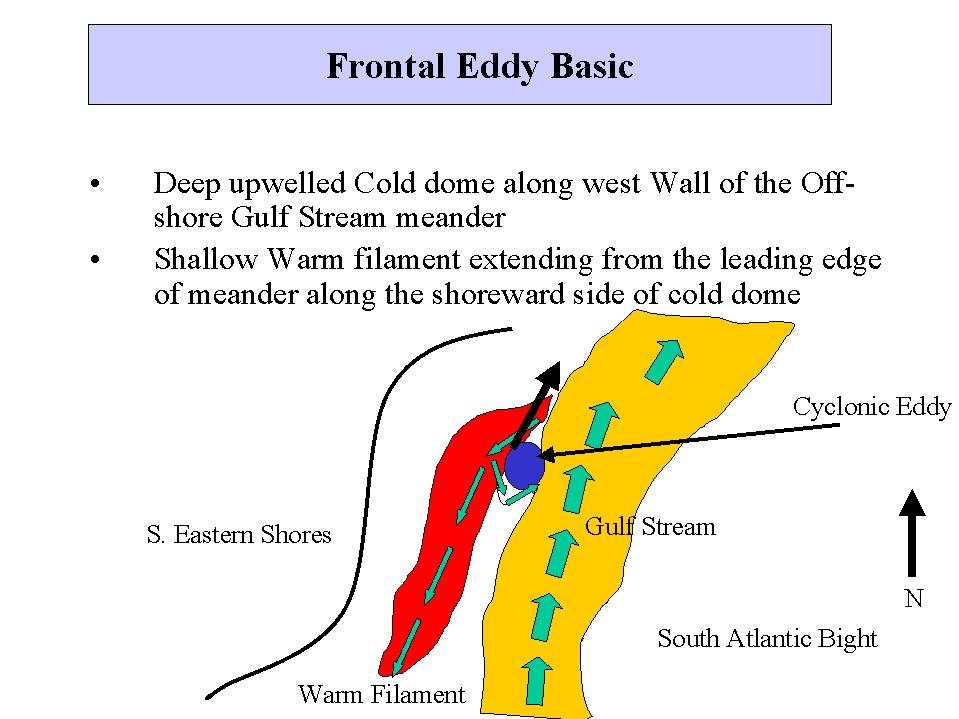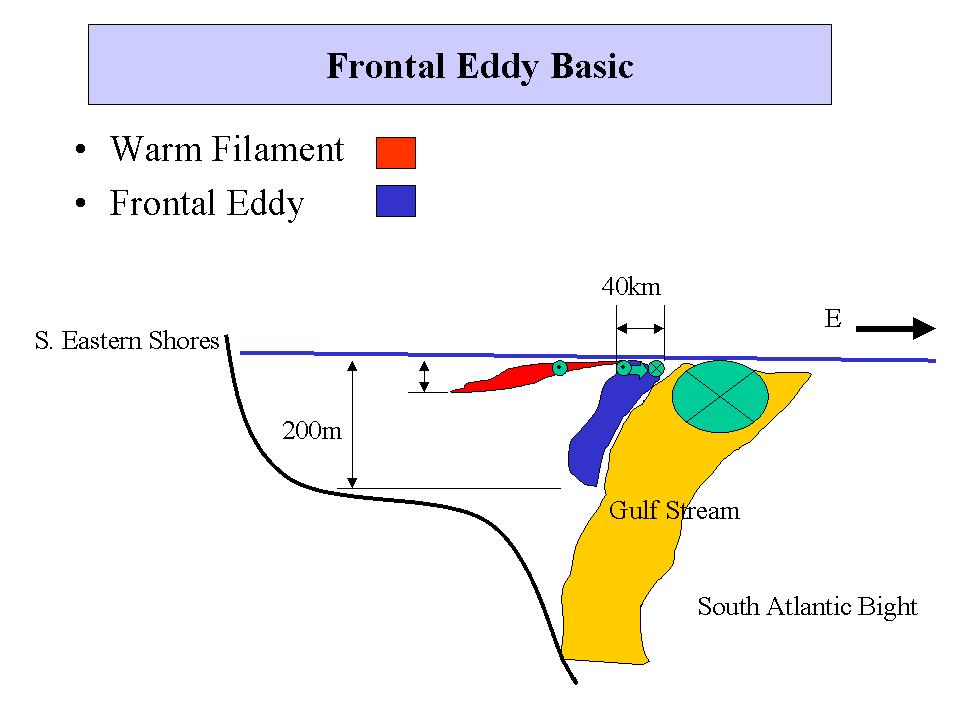
Figure 1. A top-down schematic drawing of a Gulf Stream Frontal Eddy.

Figure 2. A cross section schematic drawling of a Gulf Stream Frontal
Eddy.
OC4331-Mesoscale
Oceanography
Final Project Summary
Topic Area
LCDR Ruben A. Cantu, USN
LT Steve Martin, USN
Gulf Stream frontal eddies are defined as the cold cyclonic circulation features formed in the troughs of northward propagating Gulf Stream meanders in the South Atlantic Bight. The Frontal Eddy Dynamics (FRED) experiment conducted offshore North Carolina between Cape Fear and Cape Hatteras included a multiplatform intensive survey of a frontal eddy "Abbot" in May 1987. The observations were used to examine the structure and propagation of Eddy Abbot. Eddy Abbot was the first Gulf Stream frontal eddy seeded with tracking boys to be followed beyond Cape Hatteras. Previously, frontal eddies were assumed to be sheared apart as they approached the confining topography of Cape Hatteras , leaving the near surface nutrient rich waters of the cold dome stranded on the North Carolina shelf.
Satellite imagery, AXBTís and XBTís, current meter/thermistor moorings, drifting buoys and a model to fit buoy trajectory, eddy Abbot was used to track and dissect eddy Abbot and itís accompanying warm filament. Below is a daily description of the frontal eddy.
May 13: The frontal eddy cold dome is located offshore the southern end of Raleigh Bay. Satellite surface temperature indicate warm surface water is being transported on shoreward side.
May 14: The cold dome is propagating 50 km/day. The cold dome follows the 200 m isobath.
May 15: The cold dome off of Cape Hatteras with a trailing warm filament extending to Raleigh Bay. The cold dome accelerates to 70 km/day over shallow shelf vice being sheared apart. Also, the cold dome becomes elongated and signature on the surface is reduced in size.
May 16: The cold dome is well past Cape Hatteras and confining topography. Th cold dome no longer visible in AVHRR and propagation speed has slowed significantly to under 50 km/day. A new warm filament began to grow along the shoreward side of the cold dome and the previous warm filament is now detached from the cold dome and remains isolated in Raleigh Bay.
May 17+: The cold dome continues to move to northeast while the previous warm filament remains in Raleigh Bay and dissipates.
May 23: The warm filament buoy (shoreward) is rapidly transported downstream. It had a total residence time of 7 days.
FRED experiment provided outstanding measurements to disprove the earlier notion that Gulf Stream frontal eddies broke up over the shallowing waters near Cape Hatteras. The ability to track Eddy Abbot with four drifters and study it's evolution over two weeks, along with the other data set measurements, provided a valid conceptial model of Gulf Stream Frontal Eddies


Figure 2. A cross section schematic drawling of a Gulf Stream Frontal
Eddy.
Glenn, S.M., and C.S. Ebbesmeyer, 1994: "The structure and
propagation of a Gulf Stream frontal eddy along the North Carolina
shelf break." J. Geophys. Res., 99,
5029-5046.